
For 3 years now, I’ve been usually visiting a particular nook of the Web — the digital library of former Legal professional Common Ok.Ok. Venugopal. In March 2020, Venugopal determined to digitise and add his intensive assortment of antiquarian books — a course of that took, for the primary lot of almost 1,200 books, half a 12 months. Right now, the gathering has virtually 1,900 books, and ready within the wings are hundreds extra.
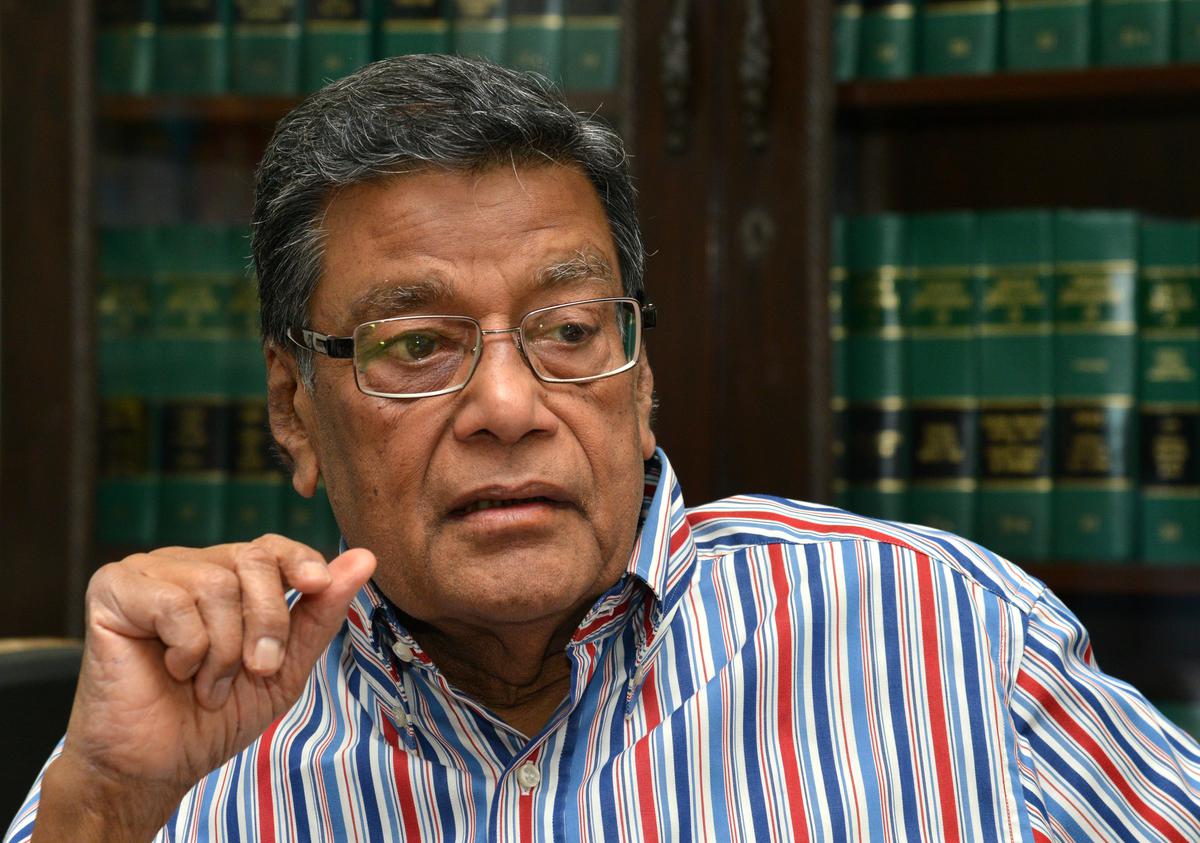
Former Legal professional Common Ok.Ok. Venugopal.
| Photograph Credit score:
R.V. Moorthy

Venugopal started amassing books in 1970, beginning with a title on the erstwhile South Indian Railway Firm. He hasn’t stopped, and once I go to him, he reveals me a brand new public sale catalogue he has his eyes on. The books on the web site, www.kkvlibrary.com, are copyright free and might be downloaded, too. The oldest within the assortment is a travelogue: Travels In Hindustan: The Historical past Of The Late Revolution Of The Dominions Of The Nice Mogol by Francois Bernier, courting again to 1676. In reality, historic travelogues are one of many greatest segments in Venugopal’s library — accounts of holiday makers to the nation, principally males, but additionally a couple of girls — who turned their lens on India.
By the 18th century, Indians too have been writing travelogues, and in 1790, the primary account written in an Indian language was revealed — Varthamanappusthakam, by the Malayali Syriac Christian priest Paremmakkal Thoma Kathanar. In English, The Travels of Dean Mahomet by Dean Mahomed, a local of Patna, was launched in 1794 — the primary English ebook to be revealed by an Indian. Later, via the 18th and 19th centuries, extra Indians would write accounts of their travels to far corners of the world — Russia, China, Africa, the U.S. and Europe.
The depictions by early guests to India are each fascinating and evocative — a product of the colonial lens and in a number of circumstances, an anthropological research of a folks and a land so expansive, changeable and new to international eyes. Right now, these accounts act like home windows into a special time, each alien and acquainted. We deliver to you a couple of snippets from a few of these books — portraits of individuals, locations, and the previous.

The Ganges
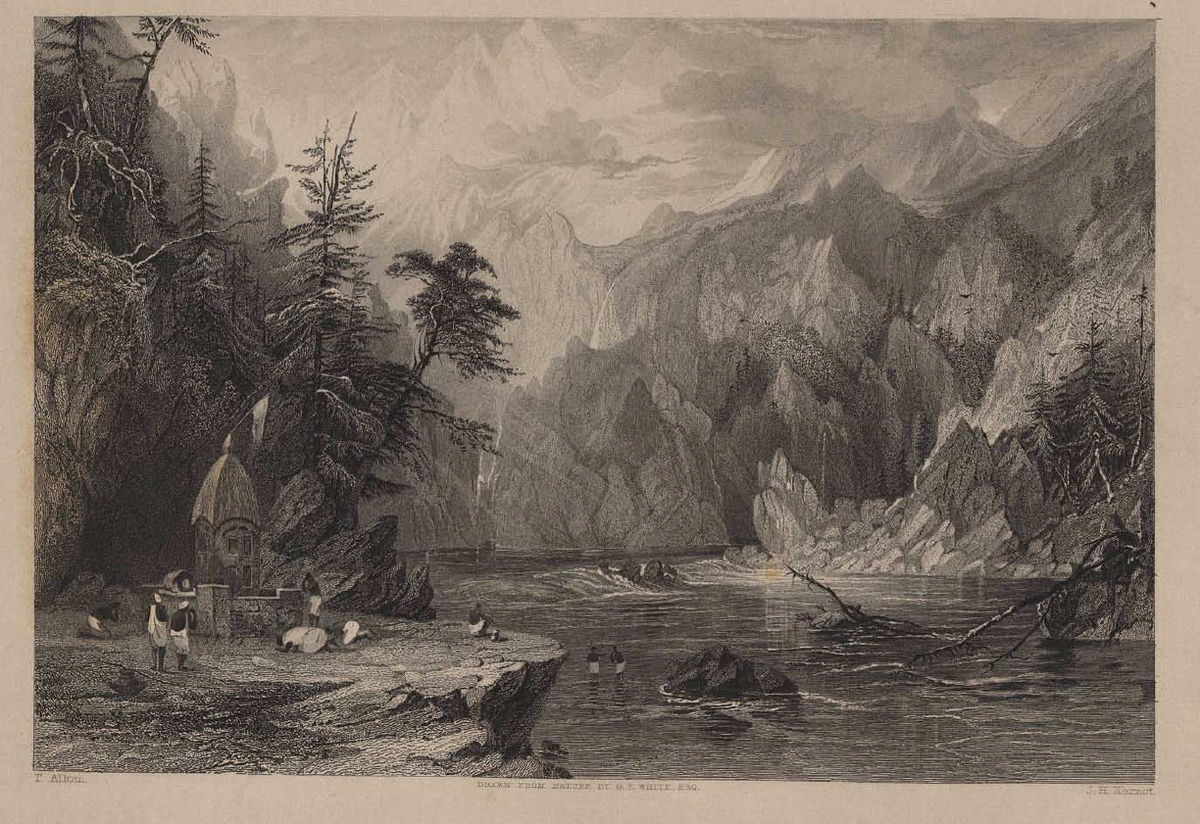
“The Ganges, at this place, abounds with fish of all types; and, amongst them, the king of the finny tribes, the noble mahaseer, or great-head, which by many individuals is esteemed essentially the most scrumptious fresh-water fish which ever gratified the palate of an epicure. It rises to the fly, affording wonderful sport to the angler, typically attaining the dimensions o f a big cod, and is taken with appreciable issue, even by those that have been accustomed to salmon-fishing in essentially the most celebrated rivers of Scotland. The mahaseer is shipped to desk in numerous methods, Indian cooks being well-known for his or her fish-stews and curries ; but it surely doesn’t require any adventitious support from the culinary artwork, as it’s beautiful when plain-boiled, being, in line with one of the best gastronomic authority, luscious however but unsatiating.”
— Views In India, Mainly Amongst The Himalaya Mountains; Lieut. George Francis White, of the thirty first Regt. (1836)
Haridwar
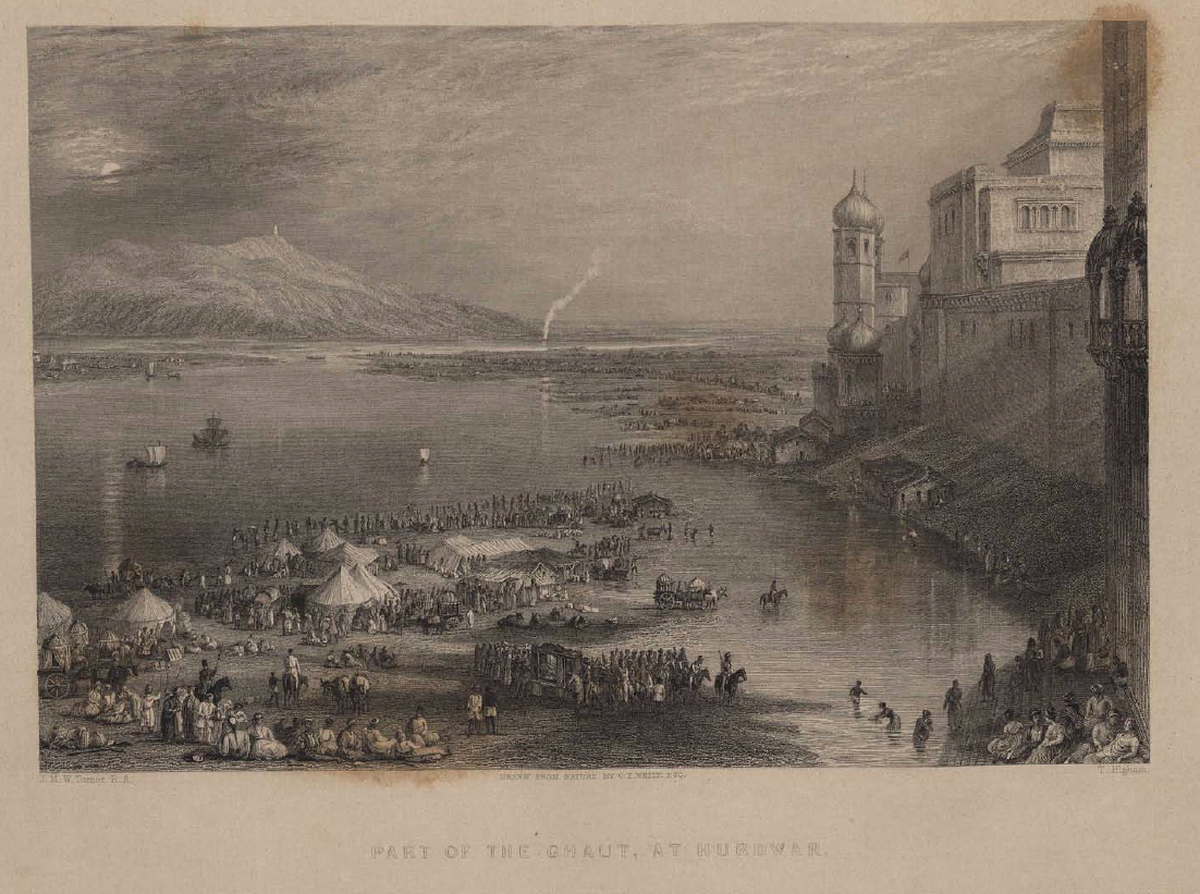
“A good takes place yearly at Hurdwar within the month of April, lasting almost a fortnight, that being the interval chosen by the pilgrims, who flock from all components of India, to carry out their ablutions within the Ganges… The local weather of Hurdwar through the early a part of April is exceedingly variable: from 4 within the afternoon, till 9 or ten o’clock on the next day, the wind usually blows from the north or east over the snowy mountains, rendering the air delightfully cool; through the intermediate hours, nevertheless, the thermometer ceaselessly rises to 94°; and the clouds of mud arising from the concourse of individuals, along with their beasts of burden, collected at this place, add significantly to the annoyance sustained from the warmth.”
— Views In India, Mainly Amongst The Himalaya Mountains; Lieut. George Francis White, of the thirty first Regt. (1836)
The Yamuna
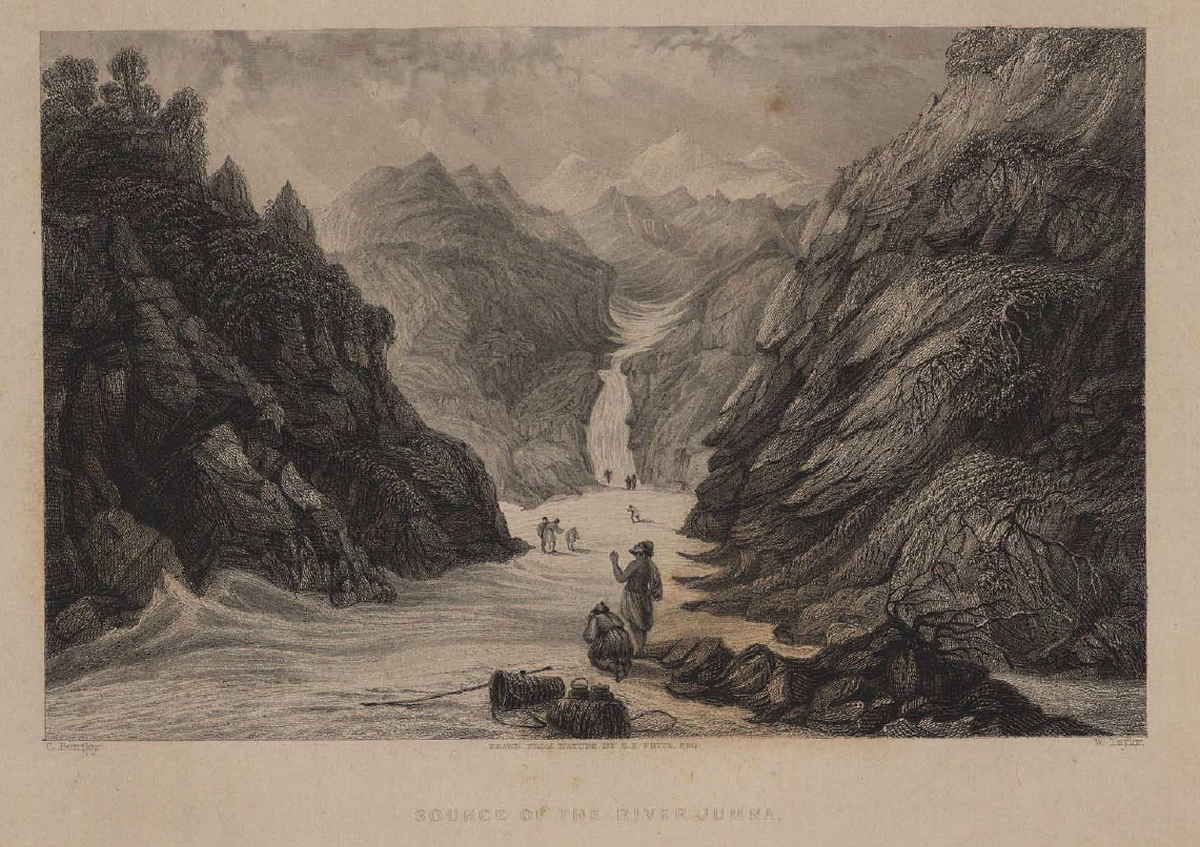
“As we approached Jumnootree, which isn’t accessible till the month of Could, we discovered the river gliding below arches of ice, via which it had worn its passage, and at size, these plenty changing into too strongly frozen to yield and fall into the present, the stream itself may very well be traced now not, and, if not at its precise supply, we stood on the first stage of its youthful existence… Probably the most holy spot is discovered upon the left financial institution, the place a mass of quartz and silicious schist rock sends forth 5 sizzling springs into the mattress of the river, which boil and bubble at a livid charge. When mingled with the icy-cold stream of the Jumna, these smoking springs type a really pleasant tepid bathtub, and the pilgrims, after dipping their arms within the hottest half, carry out way more agreeable ablutions.”
— Views In India, Mainly Amongst The Himalaya Mountains; Lieut. George Francis White, of the thirty first Regt. (1836)
Amritsar
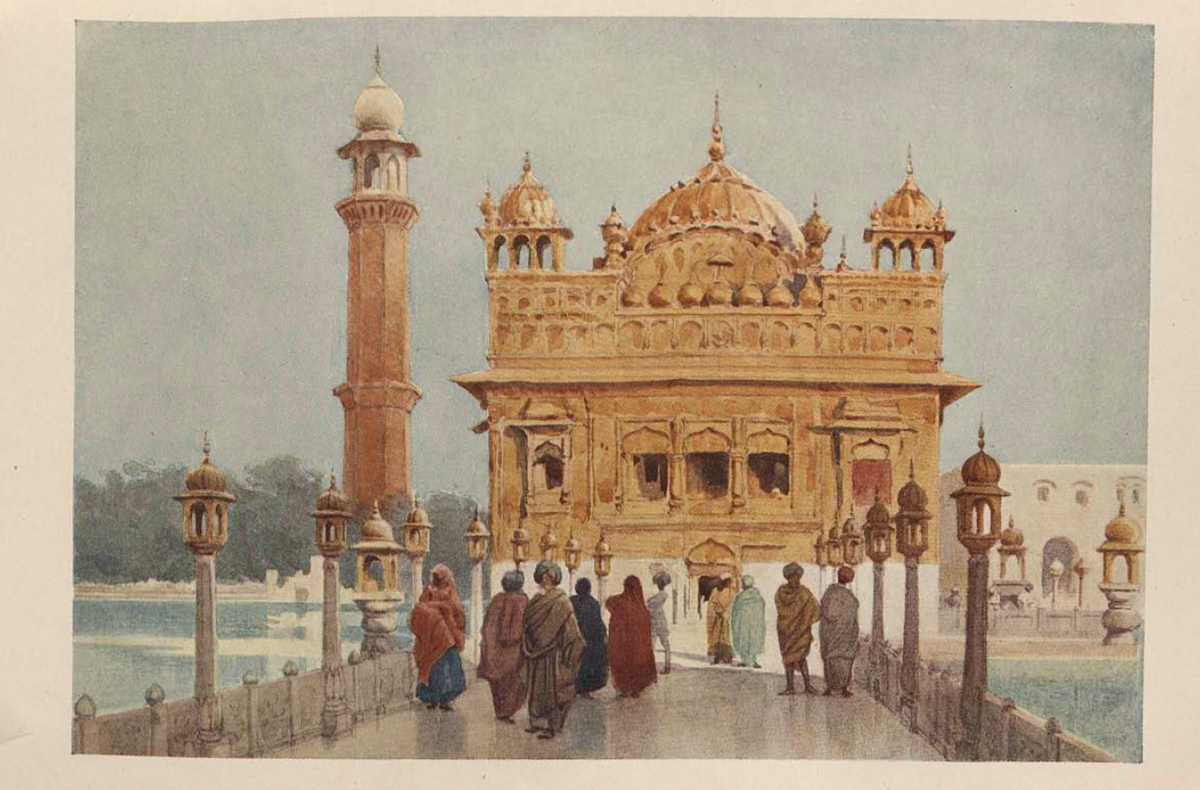
“Nothing, nevertheless, that I’ve ever seen can evaluate with the Golden Temple, in its personal explicit approach, and it’s fairly as inconceivable to explain adequately its towers and minarets and different sacred spots and issues, in and round its precincts, as it could be to explain a stupendous dream. The entire thing is sort of a dream, too unusual and in some methods too lovely to explain.”
— The Excessive-Street Of Empire; A.H. Hallam Murray (1905)
Delhi
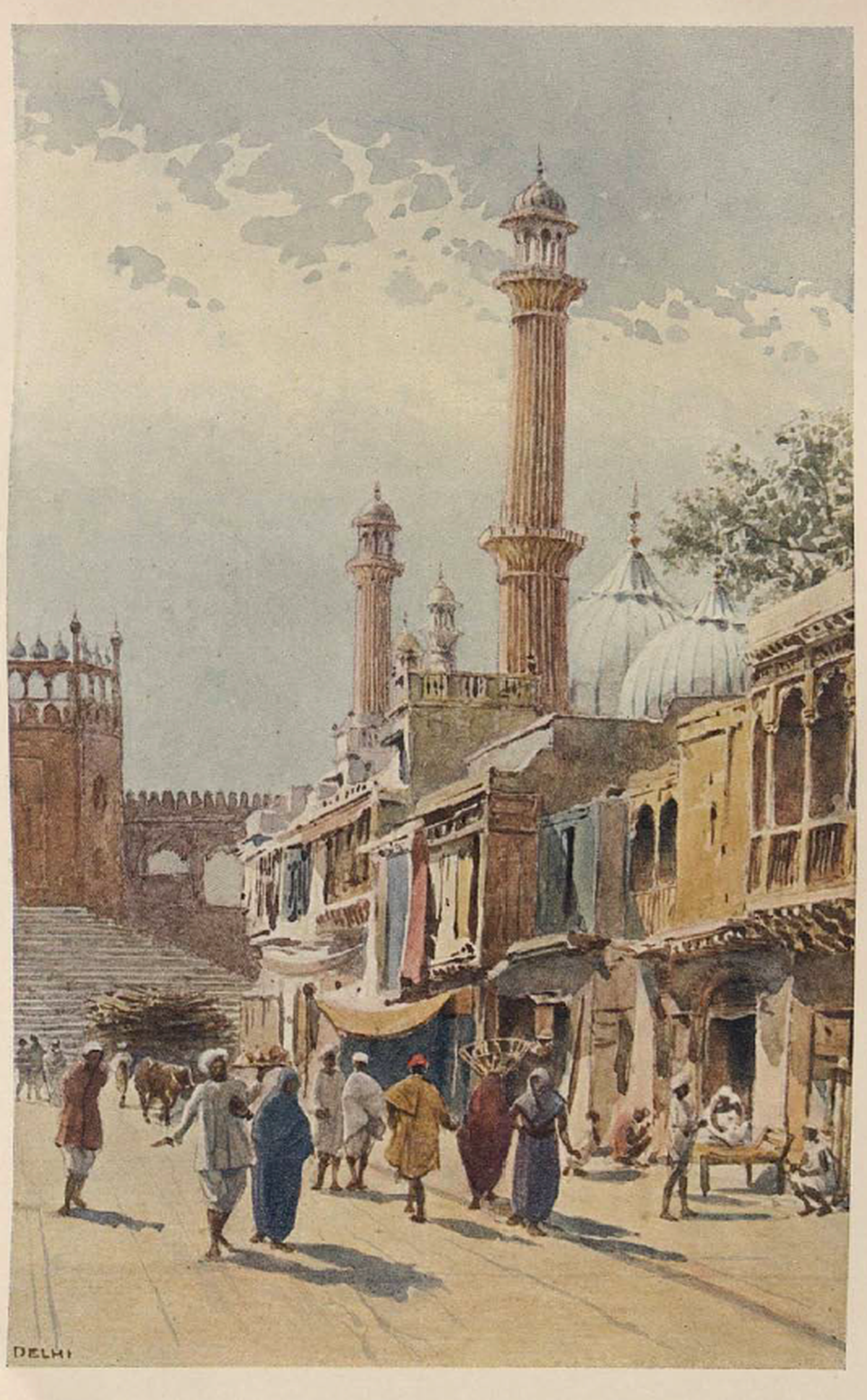
“As a metropolis it has marked options of its personal. Not like the opposite cities I had visited, it’s walled, and that too… in a most substantial method — because of our personal engineers. Though there are various streets as tortuous and slender as are present in different cities, I didn’t see wherever that squalor and tumble-down confusion which arrest the attention within the native quarters of Bombay or Calcutta; whereas one main thoroughfare, the Chandnee Chouk, main direct from the Lahore Gate to the Palace, is known as a high quality road, ninety toes broad, a few mile lengthy, with a row of timber, a canal alongside its heart (lined, besides in a couple of locations), and with comfortable-looking veranda-houses and good outlets on both facet.”
— Days In North India; Norman Macleod (1870)
Agra
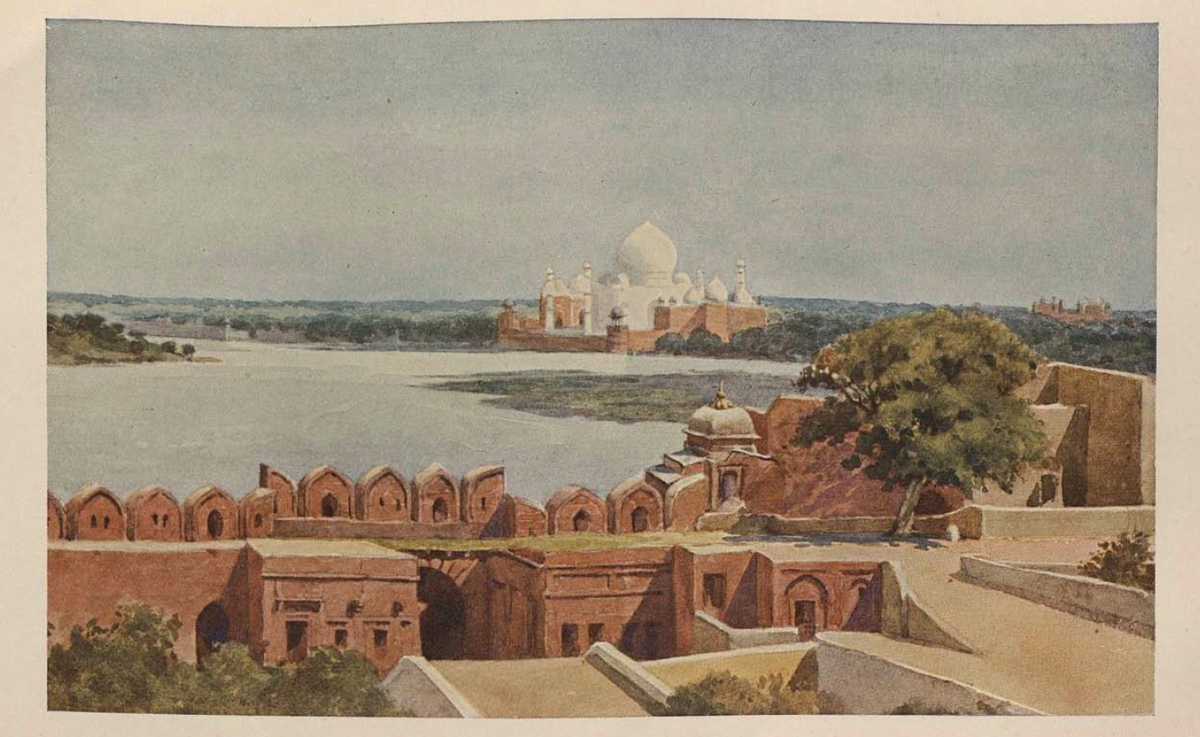
“Books have given everybody a certain quantity of basic info concerning the Mohammedan conquest of India below Baber within the fifteenth century… However I had by no means earlier than seen something… that gave me any true concept of Mohammedan structure. In Agra we have been as in a brand new world… a splendid unique flowering in magnificence and brilliancy… The well-known Taj, the gem of India and of the world, the Koh-i-noor of structure, is located about three miles from Agra, on the west financial institution of the Jumna… We have been performed to the higher story, and from an excellent open arch beheld the Taj! All smart vacationers right here pause when trying to explain this constructing, and protest that the try is folly, and betrays solely an unwarranted confidence within the energy of phrases to provide any concept of such a imaginative and prescient in stone. I don’t cherish the hope of with the ability to convey any true impression of the magnificence and great thing about the Taj, however however I can’t be silent about it.
— Days In North India; Norman Macleod (1870)
Benaras
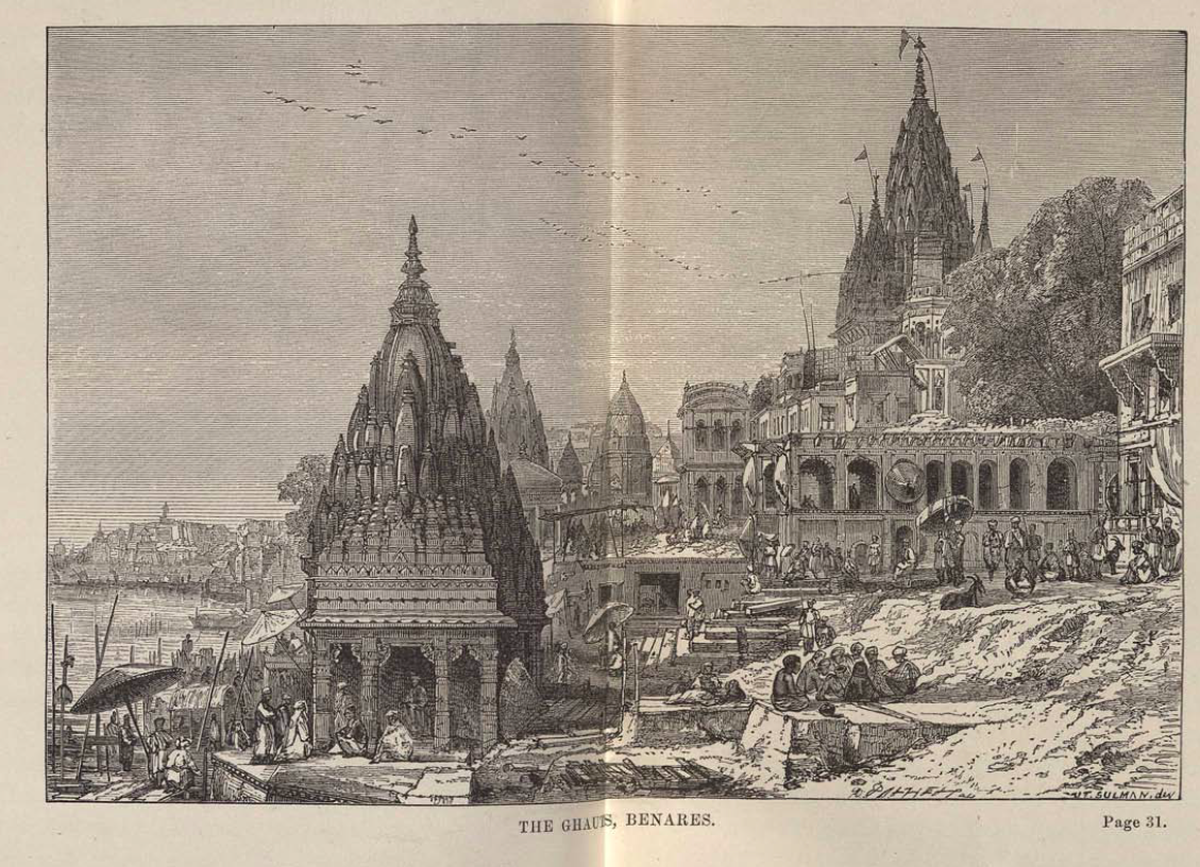
“In its construction internally as a metropolis, in addition to in different respects which I shall presently allude to, Benares stands alone. The homes are all constructed of strong stone, obtained from the quarries of Chumar within the immediate-neighborhood. They’re flanked by homes six and even seven tales excessive. Whether or not to realize shade from the burning solar, or as a method of protection in opposition to foes, these streets are so slender as to resemble the closes within the outdated city of Edinburgh. Certainly, if our readers can suppose the closes worming via the entire metropolis with sharp turnings and countless windings, they may have a reasonably good concept of the place. There are outlets of each form and for each commerce, in line with the quarter of town. All these are open to the road. There are staff in brass and iron, in silver, gold, and jewels; staff of slippers and saddlery; of arms and accoutrements; of cloths and Oriental materials; of sweetmeats advert nauseam; and sellers of grain of each form.”
— Days In North India; Norman Macleod (1870)
Calcutta
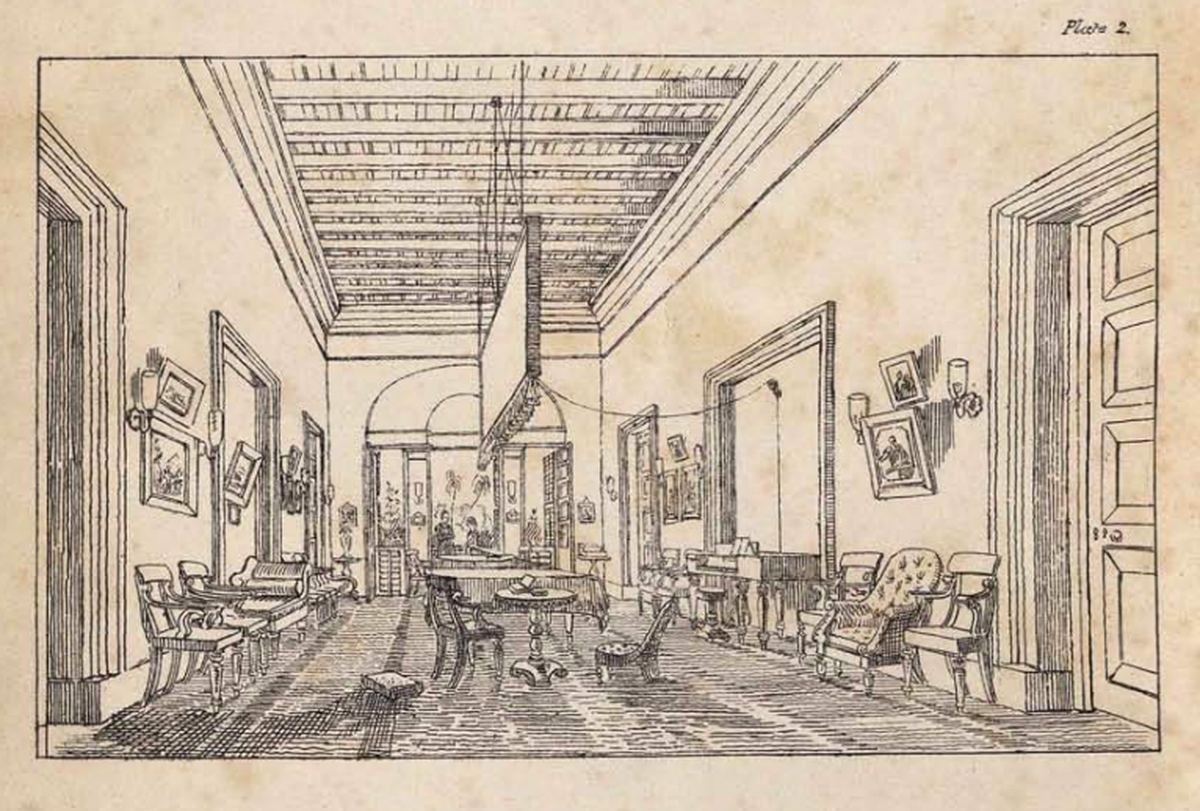
Inside a Calcutta bungalow.
“Allow me, then, in larger type, to introduce you to the outside of the home… a cushty, effectively raised, lower-roomed dwelling… The hire of such a home you’ll likely think about exorbitant, being seventy roopees per 30 days. Hire in Calcutta is certainly extraordinarily excessive, however there are not any taxes on the tenant.
The homes of Calcutta are of all shapes, ranging via the entire desk of geometrical figures… however nevertheless huge — and a few resemble castles… you’re conscious our metropolis is known as the “Metropolis of Palaces,” their inner preparations differ however little, consequently, in describing one, I describe all, although upon a bigger or smaller scale because the case could also be.”
— An Anglo-Indian Home Sketch: A Letter from An Artist in India to His Mom in England (1849)
Gwalior
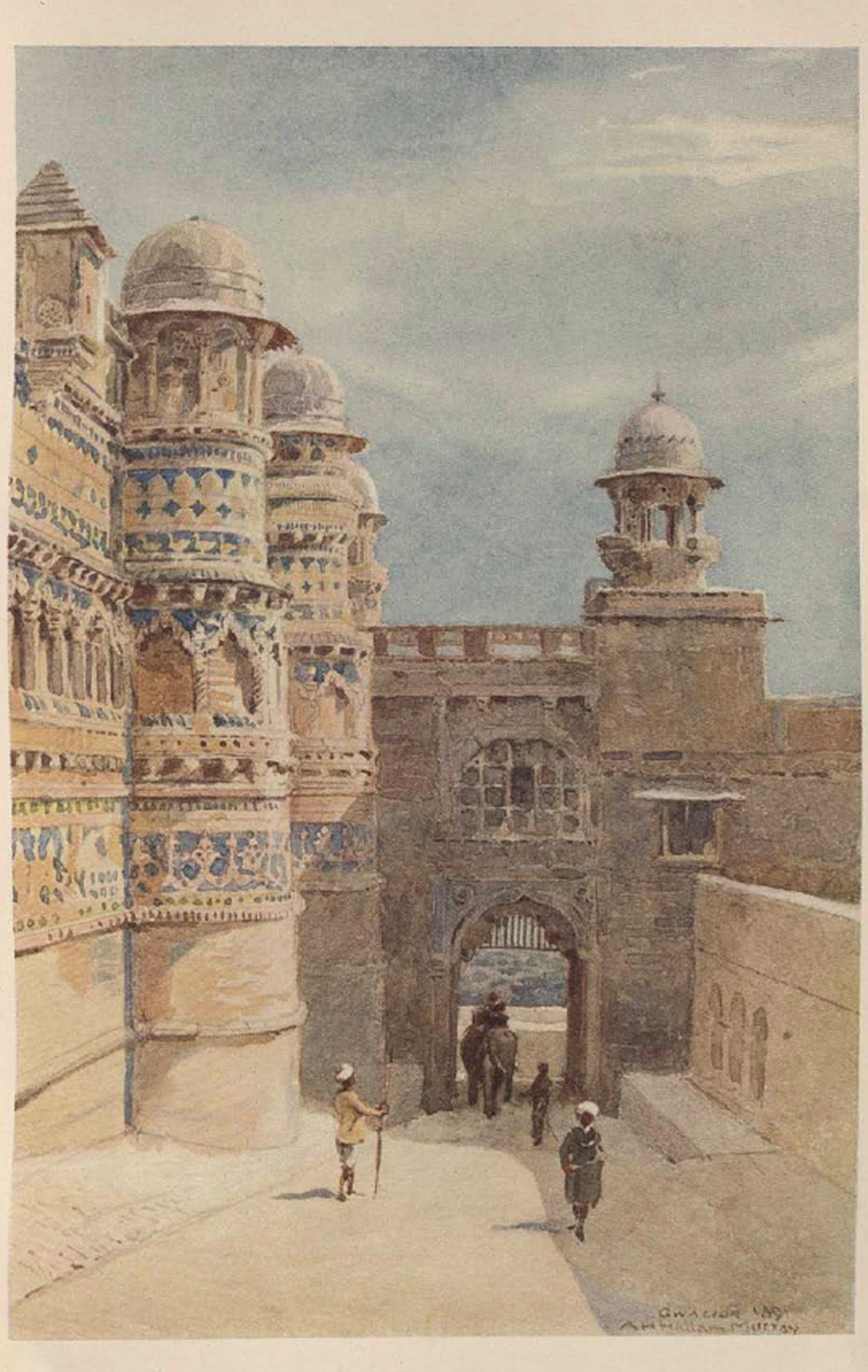
Mansingh Palace , Gwalior.
“It’s an immensely steep, sizzling climb as much as the highest of the rock on which stands the Fort and palaces; however the elephant took us up leisurely, below the steerage of a handsome Sikh of the Maharaja’s troops, and a policeman and two mahouts; and we had time to admire the little Jain and Buddhist carvings on the rock, and the view, consistently widening out throughout the plain, as we went alongside, below six grand gateways and previous many small temples. There was one temple, about fourteen toes excessive, pinnacles and all, carved out of 1 stone most elaborately, concerning the 12 months 800, within the days when our forefathers have been extra involved with feeding their pigs on acorns than structure.”
— The Excessive-Street Of Empire; by A.H. Hallam Murray (1905)
Bombay
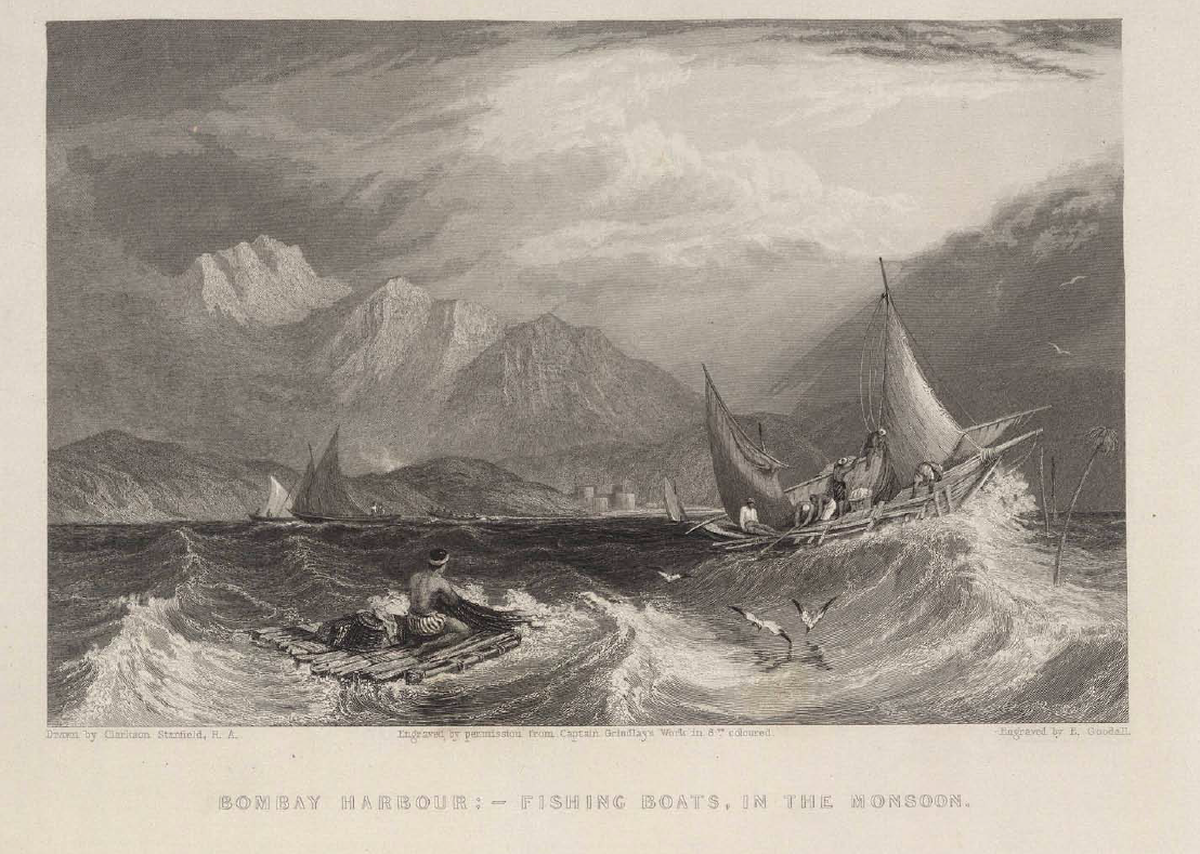
“The Harbour of Bombay presents probably the most hanging and delightful views that ever delighted the attention of a painter… Throughout one of the best season of the 12 months, the water is easy, whereas the breeze blowing in from the ocean via the larger a part of the day, the very smallest boats are, with the help of the tide, enabled to voyage alongside the attractive coast, or to the varied islands which gem the scarcely ruffled wave… Even through the monsoon, when many different locations of the Indian coast are unapproachable, when the lofty and apparently interminable mountains which type the magnificent back-ground are capped with clouds, and the sea-birds that love the storm, skim between the foam-crowned billows, the fishing-boats breast the waves, and pursue their occupation uninterruptedly.”
— Views In India, Mainly Amongst The Himalaya Mountains; Lieut. George Francis White, of the thirty first Regt. (1836)
Hyderabad
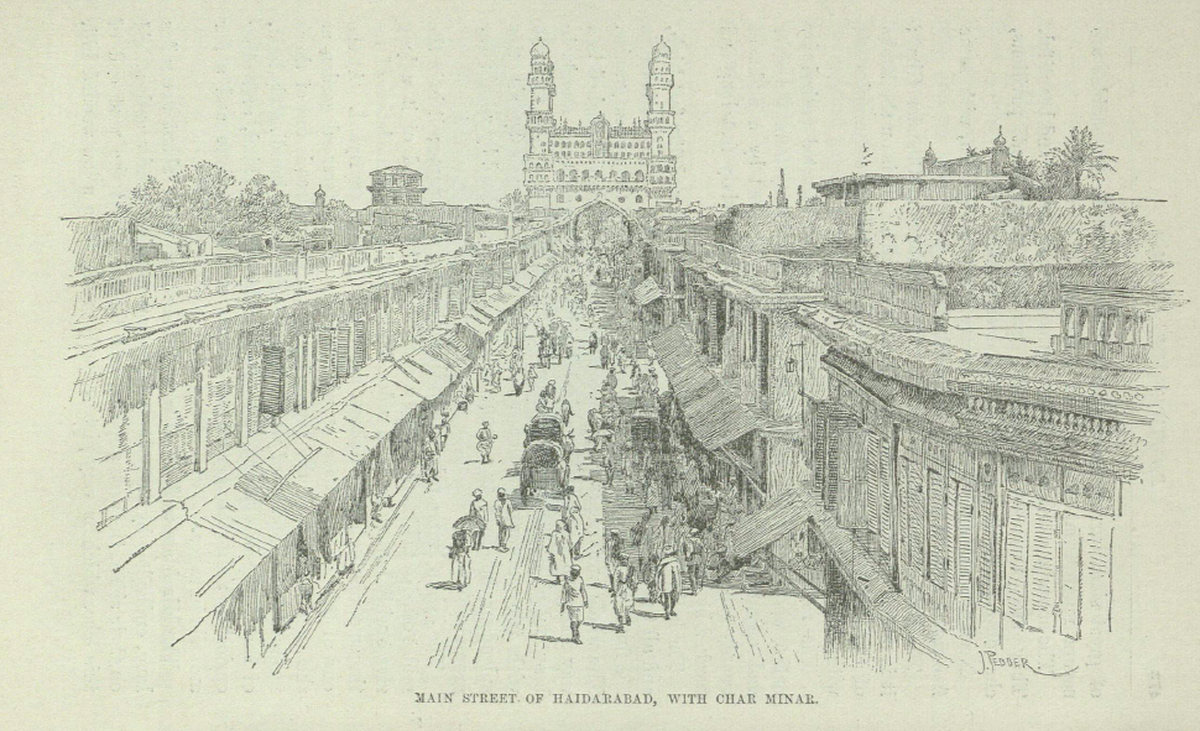
“Within the very centre of town, on the junction of the 4 primary streets, is the well-known Char Minar, or 4 towers, constructed a few.d. 1600, upon 4 grand arches, above that are a number of storeys of rooms initially devoted to a school however now used as a store-house. The constructing is 4, sq., every face being 100 toes, and the minarets soar into the air 250 toes above the extent of the road. That is the busiest spot in the entire metropolis, and hours could also be spent watching the amusing and picturesque scenes surrounding the Char Minar.”
— Picturesque India; W.S. Caine (1890)
Madras
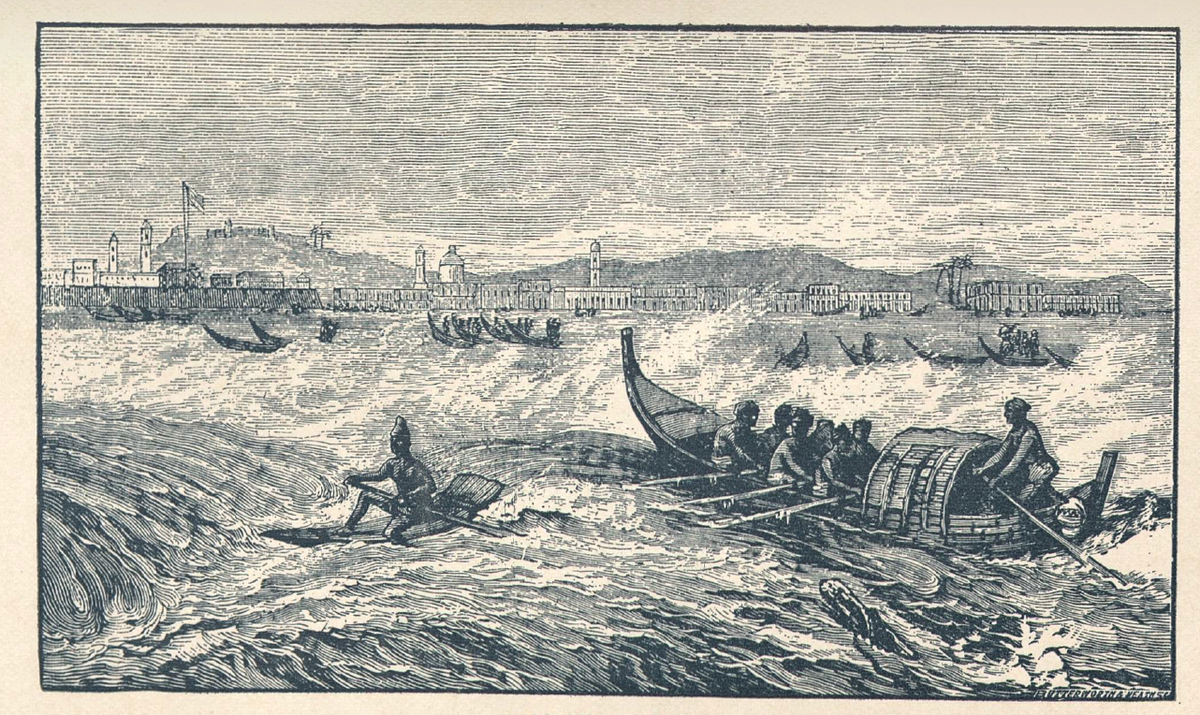
“The drive alongside the seashore to the Capper Home is the pleasantest in Madras. Right here one meets the sea-breeze, appropriately referred to as by the residents “the physician”. Right here we go essentially the most imposing of the general public buildings of town, specifically the College. It was unusual to see on the Sunday the punkas swinging throughout service within the church buildings.
Like large weavers beams with heavy curtains, they’re stored in movement by the use of cords pulled from the skin, two natives, who preserve one another awake, being employed for everybody. Nonetheless strict a Sabbatarian, the minister in addition to the folks should have the punka stored going over his head all through the service.”
— Indian Photos; Rev. W. Urwick (1891)
Madurai
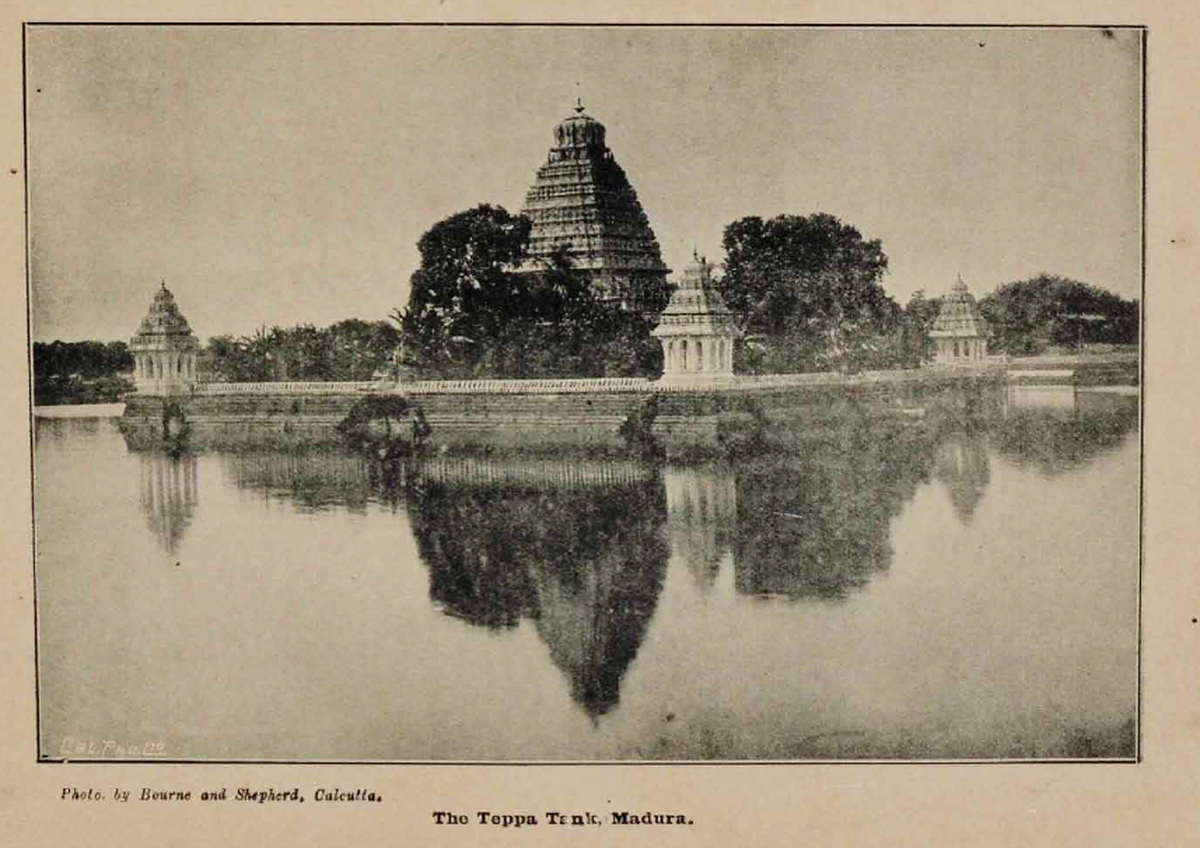
“One other celebrated constructing in Madura, now in nice half ruined, is the Palace of Tirumala, one of many best of the rulers of the province, constructed by him in 1623. The corridor is a quadrangle, 2 hundred and fifty by 100 and fifty toes, and with an elaborate hall, and 100 and twenty-eight huge granite pillars ornamented with stucco, constituted of chuncim, or shell lime, which is a attribute of the Madras Presidency. The British Authorities is now restoring it, and utilizing it for legislative functions.
On the opposite facet of the city there’s a beautiful drive resulting in a big sacred tank, the Teppu-kulam, with an island and temple within the centre. The street is arched over and shaded with banyan timber; and a really high quality specimen of this tree is to be seen within the backyard of the Collector”
— Indian Photos; Rev. W. Urwick (1891)
swati.daftuar@thehindu.co.in
Adblock take a look at (Why?)
COMMents